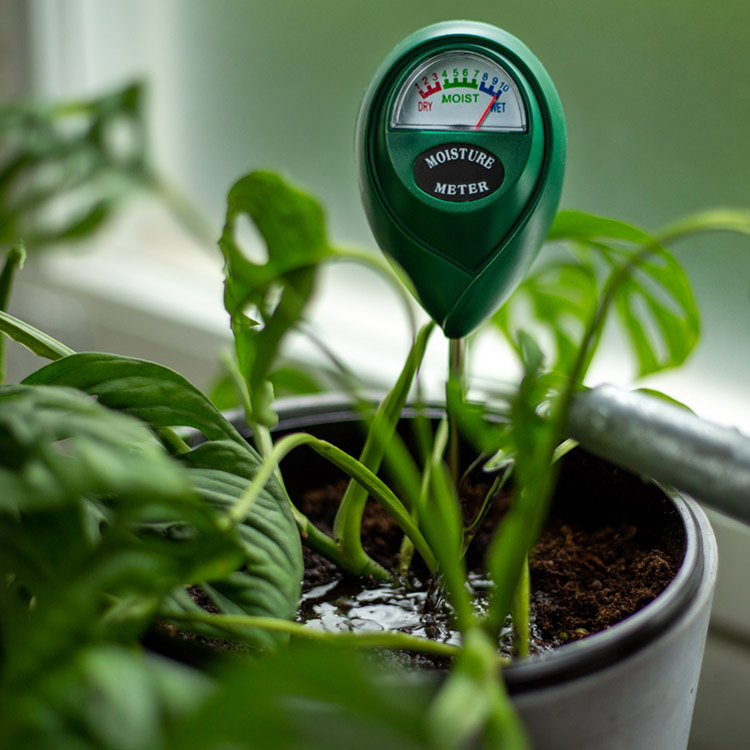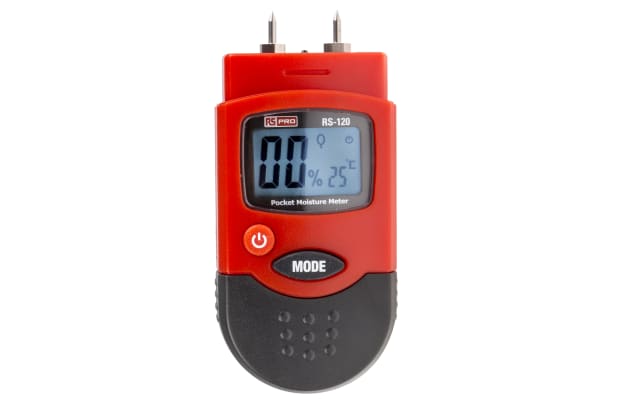Recognizing the Different Sorts Of Moisture Meters and Their Applications
Delve Into the Globe of Moisture Meters: Everything You Required to Know
In the realm of moisture meters exists a world of accuracy and practicality that usually goes unnoticed. Comprehending just how moisture meters operate, the various types readily available, and their varied usages can drop light on their value in making sure top quality and performance.
Exactly How Moisture Meters Work
Moisture meters operate by gauging the electrical conductivity or capacitance of materials to identify the moisture content existing. These meters are very useful devices throughout numerous markets, including woodworking, construction, and farming. By utilizing different approaches such as pinless or pin-type technology, wetness meters give exact readings that assist specialists make informed decisions.
Pin-type moisture meters work by placing the sharp pins right into the material being checked. On the other hand, pinless wetness meters use electromagnetic signals to scan a larger location without creating any type of damage to the material's surface.
No matter the technique utilized, wetness meters play a critical duty in preventing issues such as mold and mildew development, structural damage, or product problems brought on by excess wetness. Understanding exactly how these meters work is important for guaranteeing the quality and honesty of products in various applications.
Types of Moisture Meters
Offered the important role wetness meters play in different industries, it is necessary to comprehend the various types available to specialists for properly analyzing moisture degrees - Moisture Meter. There are mainly two primary kinds of dampness meters: pin-type and pinless moisture meters

On the various other hand, pinless moisture meters make use of electromagnetic sensing unit plates to scan a bigger area of the product without triggering any damages. This type appropriates for swiftly scanning large locations and is commonly used for floor covering, walls, and ceilings. Pinless meters are practical for taking readings on completed surface areas without leaving any type of visible marks.
Both kinds of dampness meters have their advantages and are selected based on the specific requirements of the work at hand. Recognizing the differences in between these kinds is important for specialists to make accurate wetness analyses.
Applications Across Industries
With varied performances, wetness meters find prevalent application across various industries, assisting experts in making certain optimum problems for frameworks and materials. In the farming field, moisture meters are very useful for establishing the wetness web content in grains, seeds, and hay, ensuring quality assurance and protecting against mold growth. Building professionals count on dampness meters to analyze the moisture levels in building products like timber, concrete, and drywall, which is critical for preserving architectural integrity and preventing concerns like rot or mold. The flooring market uses wetness meters to determine the moisture material in subfloors before setting up numerous flooring, stopping pricey problems due to excess moisture. Moreover, in the food industry, moisture meters are used to keep track of and control moisture levels in products such as grains, nuts, and important site dried fruits to maintain quality and quality. Additionally, moisture meters play an important role in the restoration and damage control market by aiding specialists address and identify water damage in structures without delay. Throughout these diverse industries, dampness meters are indispensable devices for making certain the top quality, security, and longevity of various materials and products.
Tips for Using Wetness Meters
Utilize the dampness meter's calibration setups to guarantee exact analyses when measuring the dampness material in numerous materials. Calibration is important for the correct functioning of a wetness meter. Before each use, it is suggested to check and change the calibration setups according to the specific material being examined. Furthermore, make certain the meter is set to the right dampness array for the material you are measuring to get one of the most specific results.
When making use of a pin-type wetness meter, put the pins to the appropriate depth suggested for the product being examined. This makes certain that the wetness analyses are drawn from the have a peek at this site correct deepness within the material, giving a much more exact depiction of its moisture web content. For pinless wetness meters, remember to maintain correct call with the material's surface to obtain reliable readings.
Routinely check and change the batteries in your wetness meter to protect against imprecise analyses as a result of low power. When not in usage to lengthen its life-span and maintain its precision, Shop the meter in a secure and dry location. By complying with these suggestions, you can make best use of the efficiency of your dampness meter and get specific moisture web content measurements throughout various products.
Maintenance and Calibration
To make certain the accuracy of wetness content measurements, normal upkeep and calibration of the wetness meter are necessary action in its appropriate performance. Upkeep includes maintaining the moisture meter totally free and tidy from debris that can impact its analyses. It is essential to follow the supplier's standards for cleansing to stop damage to the device. In addition, routine calibration is required to verify the precision of the readings. Calibration changes the moisture meter to make certain that it provides trusted and constant outcomes.
Calibration ought to be done occasionally, specifically if the dampness meter is used frequently or in essential applications where specific dimensions are called for. By adjusting the moisture and preserving meter regularly, individuals can rely on the precision of the moisture content measurements acquired.
Conclusion

To conclude, dampness meters play an essential role in various industries by accurately content measuring the moisture material of products. Recognizing how these devices function, the different kinds readily available, and appropriate maintenance and calibration are important for obtaining dependable results. Whether in construction, agriculture, or production, the usage of wetness meters helps make certain high quality control and efficiency in procedures.

In conclusion, moisture meters play a crucial duty in numerous markets by accurately measuring the dampness material of materials.